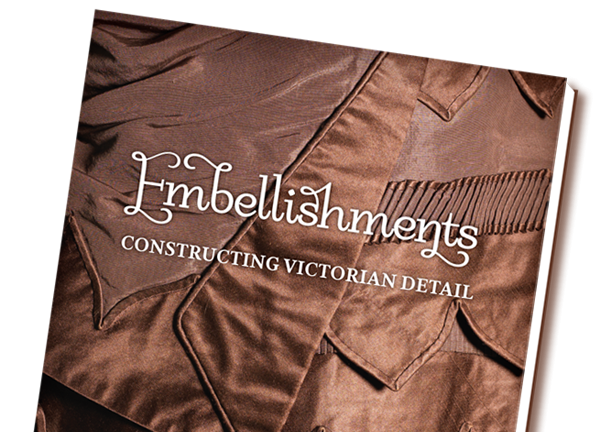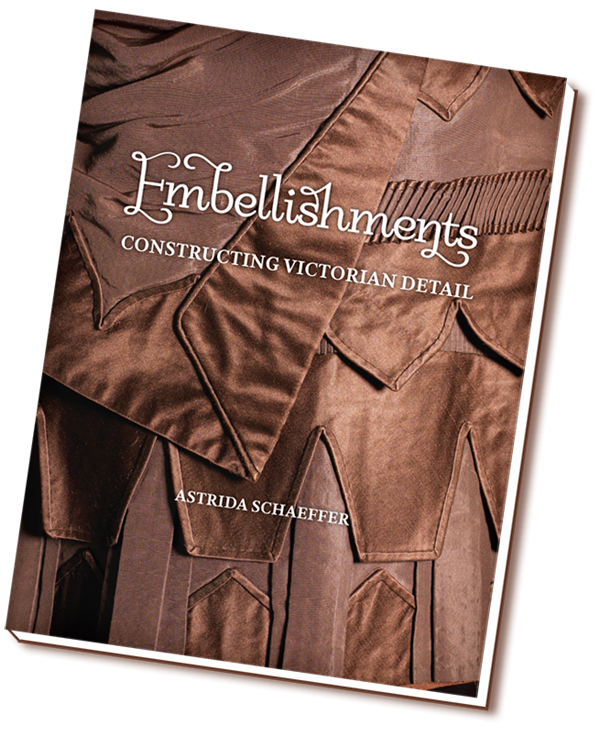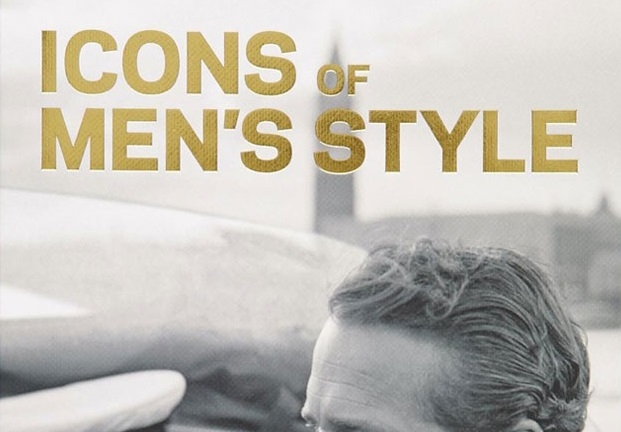Book review of Embellishments by Astrida Schaeffer

by Catherine Scholar, First published for the May/June 2013 issue of Finery

Victorian costumers, brace yourselves! There’s a whole new world of inspiration and practical assistance coming your way. I recently had the privilege of previewing the first three chapters of Embellishments by Astrida Schaeffer, an upcoming book that details, well, embellishments. On late Victorian gowns. In here’s-how-you-do-it detail. Interested yet? You should be!
The book was inspired by the exhibit “Embellishments: Constructing Victorian Detail” at the University of New Hampshire’s Museum of Art. Author Astrida Schaeffer curated the exhibit, and managed collections at the museum for ten years. She is also a costumer, and makes hand-carved mannequins for museum exhibits. Her combination of academic insight, historical understanding, and practical sewing skills make her the perfect author for this kind of book.
The book opens with an introductory chapter on Victorian clothing aesthetics, breaking the style down into five elements: self trim, color contrast, texture contrast, asymmetry, and layering of elements. Each topic is explored and illustrated with detailed photographs. This is all fabulously inspiring, but the best is yet to come!

The remainder of the book is devoted to “going under the hood” and describing in detail seven different embellishment techniques: ruching, pleating, ribbon work, bound edges, cord and braid work, applique, and passementerie. Each chapter gives detailed instructions for the basic technique and several variations. Instructions are illustrated with diagrams, photos of extant garments, period fashion plates, and directions from Victorian sewing manuals. The chapter on ruching includes directions for horizontal and vertical ruching, several variations, and ways to include ruched panels into garments. The pleating chapter includes help on figuring yardage, instructions and variations for knife pleats, diagrams for single, double and triple box-pleats, ways to “sculpt” pleats for added interest, and much, much more. The depth of information is amazing. Schaeffer doesn’t just give us a pattern for one trim on one gown; she shows us how to take an idea and run with it to create our own visions.

Interpolated throughout the chapters are “spotlights” on ten dresses from the Irma Bowen Textile Collection at UNH. These interludes illustrate the techniques and history described in the how-to chapters. I was fascinated by a description of an early 1870s day dress: there are numerous split seams in the gown. Schaeffer points out that the only machines available at that date were chain-stitch, using one thread. If that thread broke, you could lose the whole seam. Small historical details like this bring the original seamstresses and wearers to life.
The end of the book includes a glossary, stitch diagrams, hints for transferring patterns to fabric, and resources for period garments and print resources.
One of my favorite aspects of Embellishments is that Schaeffer never forgets that these dresses are living artifacts, not static artworks. She keeps her work firmly tied to the living women that wore these gowns over a century ago. She constantly reminds us to imagine how a gown would look in motion, on a woman, under gaslight. We read about how the new sewing machines allowed women to pile on trimming, but how one broken thread could lead to a serious wardrobe malfunction. We picture the immigrant bride choosing a fashionable but practical red wedding dress.
I’ve gushed a lot, and I can hear you wondering, are there any drawbacks, any negatives? Not really, in my opinion. Schaeffer assumes that her readers have basic sewing knowledge, although she has included a glossary of terms in the book. A rank beginner might be confused by her diagrams. There are also no patterns for the dresses themselves; the focus here is on embellishments, not garment construction. That’s less a drawback than just sticking to the point of the book. Other authors have covered garment construction, and done it well. Schaeffer sticks to decoration and trimming.
This is no surface-only coffee-table book full of pretty pictures that leaves us frustrated as we try to figure out exactly what is going on. Nor is it all diagrams and details with no style or soul. Schaeffer has achieved both: she has dug into the details of construction and trimming to offer a highly practical handbook of techniques, and married them to sumptuous and inspiring photography and a sensitive historical understanding.
After a successful Kickstarter campaign, the book is due for release in mid-June. You can pre-order your copy online at http://www.schaefferarts.com/embellishments/ .
I’ll say it straight up: Embellishments is going to be a must-have costuming reference, alongside Nancy Bradfield’s Costume in Detail and the V&A Museum’s 17th century series. You heard it here first.


Leave a comment